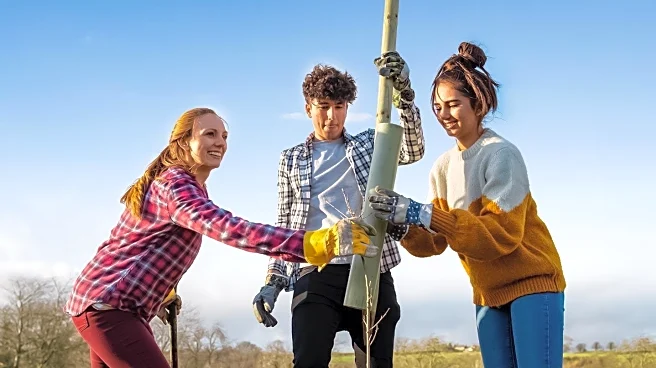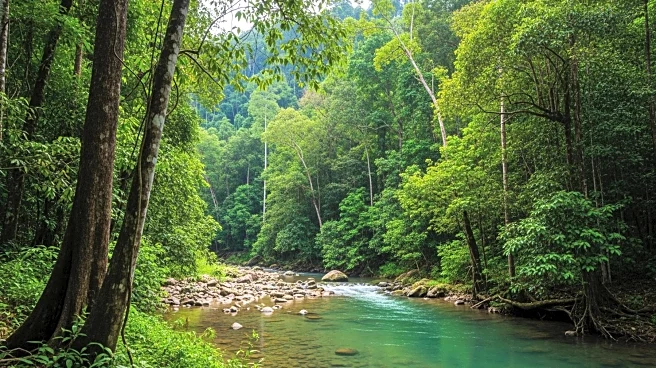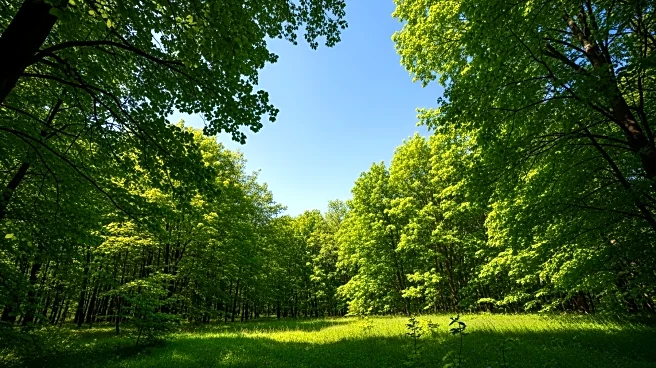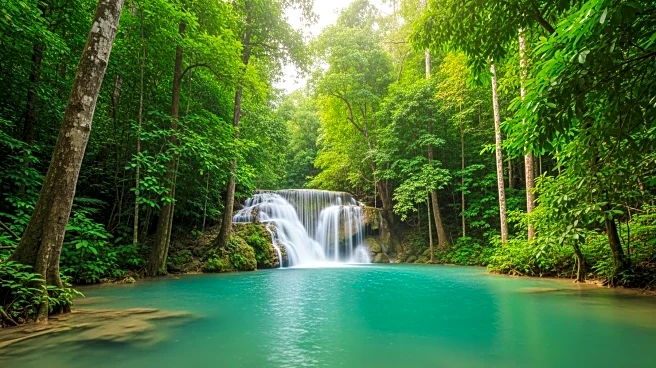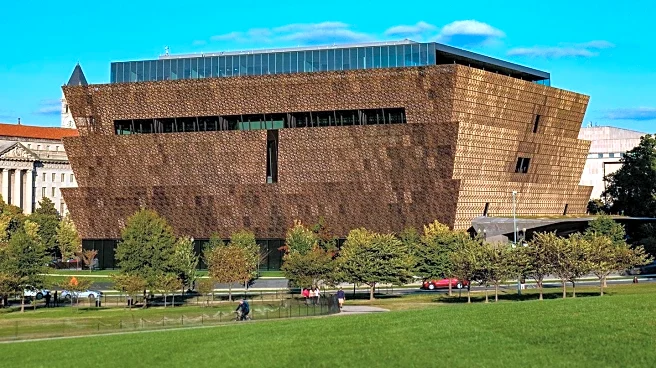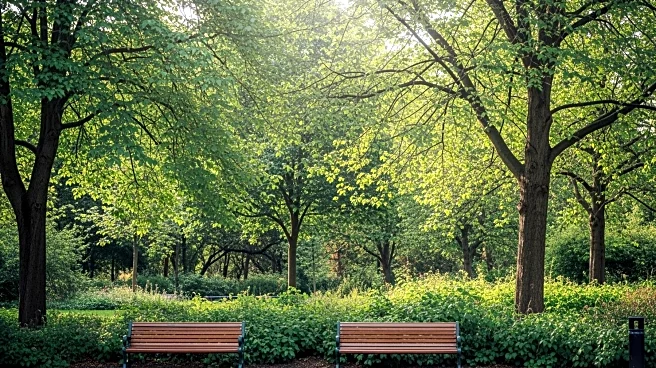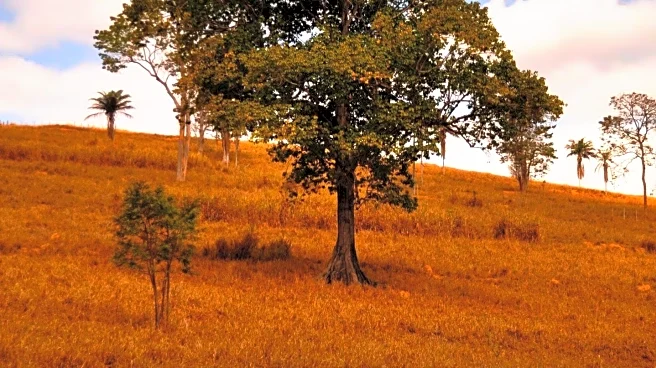What's Happening?
Westmorland and Furness Council is advancing its environmental initiative by trialing the Miyawaki method, a Japanese approach to creating fast-growing, dense native woodlands. The council aims to plant
250,000 trees over five years, corresponding to one tree per resident. So far, 40,000 trees and hedgerows have been planted, with the next phase inviting residents and community groups to apply for tree and hedge packs. The Miyawaki method is known for establishing micro woodlands that foster rich biodiversity and natural resilience. The project has already seen success in areas like Barrow and Kendal cemeteries and Ormsgill Quarry.
Why It's Important?
This initiative is crucial for enhancing local biodiversity and combating climate change. By adopting the Miyawaki method, the council is promoting sustainable environmental practices that can lead to significant ecological benefits. The project empowers communities to actively participate in environmental conservation, fostering a collective effort towards a greener future. The council's commitment to planting trees for each resident underscores the importance of individual contributions to environmental sustainability, potentially inspiring similar initiatives in other regions.
What's Next?
Residents and community groups are encouraged to apply for tree packs by the deadline of November 30. The council will continue to monitor the progress of the planted woodlands and assess their impact on local biodiversity. Future phases of the project may involve expanding planting efforts to additional areas and engaging more community stakeholders. The success of this initiative could lead to increased funding and support for further environmental projects.
Beyond the Headlines
The adoption of the Miyawaki method reflects a growing trend towards innovative environmental solutions that prioritize rapid ecological restoration. This approach may influence other councils and organizations to explore similar methods, contributing to global efforts in biodiversity conservation. The project also highlights the role of local governments in driving environmental change and the importance of community involvement in achieving sustainable outcomes.
